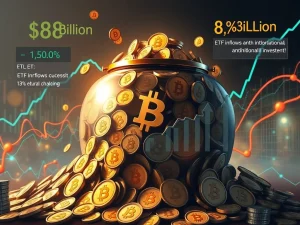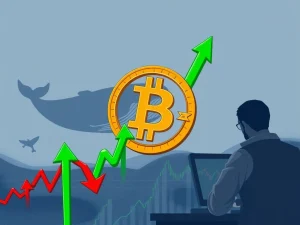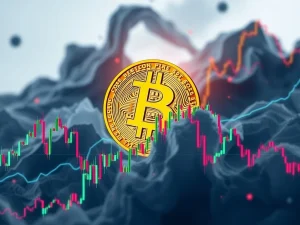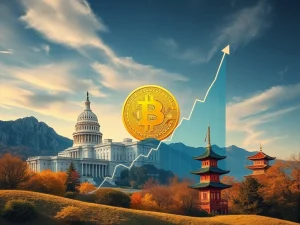Shocking Market Twist: S&P 500 Volatility Briefly Hits Bitcoin Levels Amid Tariff Fears
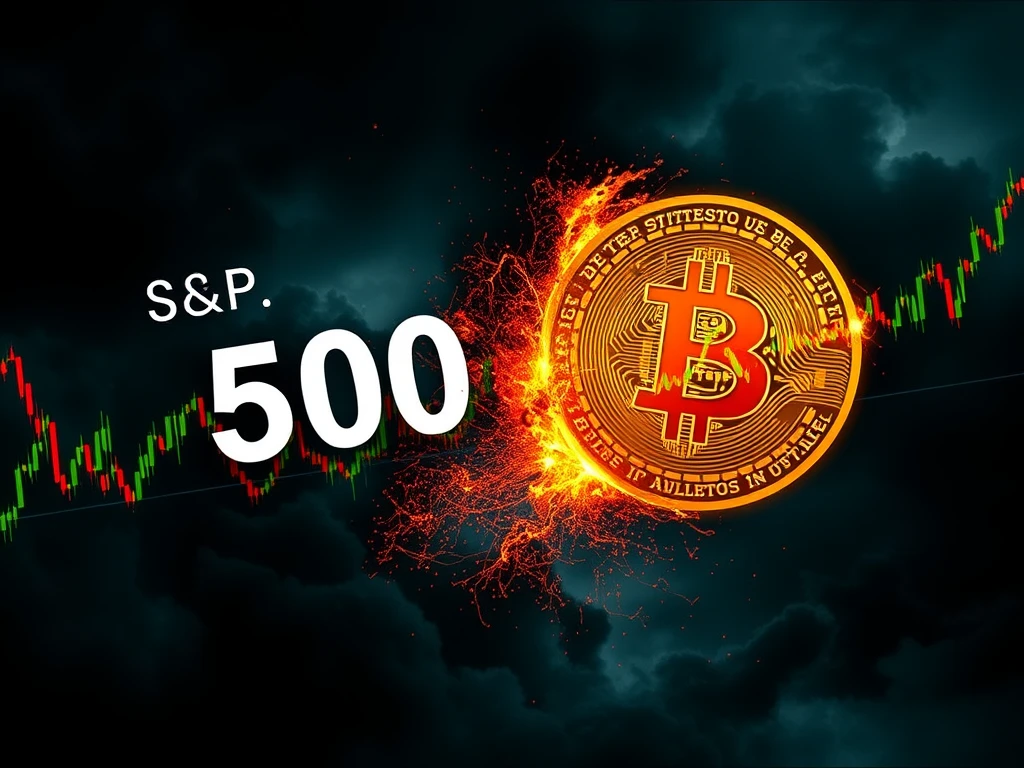
Hold onto your hats, folks! In a truly unexpected turn of events, the seemingly stable world of traditional finance experienced a jolt that crypto enthusiasts are all too familiar with: Bitcoin-level volatility. Yes, you read that right. The S&P 500, a benchmark of the US stock market, briefly danced with the kind of price swings typically seen in the wild west of cryptocurrency during the height of Trump’s tariff war. Let’s dive into this fascinating convergence and what it means for both traditional and crypto markets.
Was S&P 500 Volatility Really Like Bitcoin Volatility?
You might be thinking, “Bitcoin volatility? In the S&P 500? No way!” But according to Bloomberg analyst Eric Balchunas, the data doesn’t lie. He pointed out on X (formerly Twitter) that the S&P 500’s volatility, tracked by the “SPY US Equity Hist Vol” chart, shockingly spiked to 74 in early April. Guess what? Bitcoin’s volatility at the same time was around 71.
This is a significant deviation. Typically, the S&P 500 is the epitome of stability, with its average volatility chilling below 20. For context:
- S&P 500 Long-Term Average Volatility: Below 20
- S&P 500 Volatility Spike (Early April): 74
- Bitcoin Volatility (Early April): 71
While Bitcoin is known for its rollercoaster price action, seeing the S&P 500 flirt with similar levels is definitely a headline-grabbing event.
Why Did S&P 500 Volatility Surge? The Trump Tariff War Factor
So, what triggered this sudden surge in S&P 500 volatility? The finger points squarely at the return of trade war anxieties. President Trump’s “Liberation Day” tariff announcement on April 2 sent shivers down the spines of investors. The threat of duties ranging from 10% to a staggering 50% on imports from major US trading partners ignited fears of economic disruption and market instability.
Although some tariffs were paused for 90 days, the administration’s history of escalating duties, particularly on Chinese imports (reaching at least 145%), kept the markets on edge. This trade war uncertainty acted as a major catalyst for the volatility spike.
The impact wasn’t limited to stocks. US Treasurys, traditionally considered safe havens, also experienced a significant sell-off. The yield on the 10-year Treasury bond is heading towards its most dramatic increase since 2001, further illustrating the widespread market unease.
Bitcoin’s Volatility: Still the Crypto King
While the S&P 500’s brief volatility surge was noteworthy, let’s not forget that Bitcoin volatility is still in a league of its own. BlackRock highlights that Bitcoin’s volatility remains significantly elevated compared to traditional assets, being 3.9 and 4.6 times higher than gold and global equities, respectively.
Even though Bitcoin’s average volatility has trended downwards over time, it still experiences much wider price fluctuations than established assets. This inherent volatility is part of Bitcoin’s nature as a newer, more speculative asset.
Crypto ETF Performance and Bitcoin Price Under Pressure
Interestingly, despite a “macro relief” rally in US equity markets following a tariff pause, Bitcoin and spot crypto ETFs didn’t experience the same uplift. Bitfinex analysts suggest this tepid reaction indicates “institutional confidence remains cautious in the near term.”
After record inflows in January, demand for US spot crypto ETFs has cooled, with net outflows observed in recent weeks. This suggests large institutional investors might be waiting for clearer regulatory signals or more attractive entry points before committing further capital to Bitcoin ETFs.
The numbers tell the story: US spot Bitcoin ETFs have witnessed six consecutive days of outflows, signaling a potential shift in institutional sentiment, at least in the short term.
Looking Ahead: Bullish Horizons for Bitcoin Despite Volatility
Despite the recent lackluster performance and ETF outflows, the future for Bitcoin and the broader crypto market might still be bright. Bitfinex analysts point to the second quarter of 2025 as potentially bullish, driven by “new narratives” taking hold. These narratives include:
- Sovereign Accumulation: Nations potentially adding Bitcoin to their reserves.
- Real-World Asset Tokenization Growth: Expanding use cases for blockchain technology beyond cryptocurrencies.
Joe Burnett, Director of Market Research at Unchained, echoes this sentiment. He argues that Bitcoin possesses attractive qualities for long-term investors seeking protection against government policy and fiat currency risks. In this light, Bitcoin price fluctuations, while volatile, could be seen as opportunities for long-term accumulation.
Challenging the Safe Haven Narrative
The S&P 500’s fleeting moment of Bitcoin-level volatility serves as a powerful reminder. As Joe Burnett aptly puts it, this event “challenges the long-held belief that traditional markets are safer, less risky, or more stable.” In an increasingly interconnected and unpredictable global economy, volatility can surface in unexpected places. While the S&P 500’s spike was likely temporary, it underscores the shifting landscape of risk and reward across both traditional and digital asset classes.
Did you find this market volatility comparison surprising? Let us know your thoughts in the comments below!

